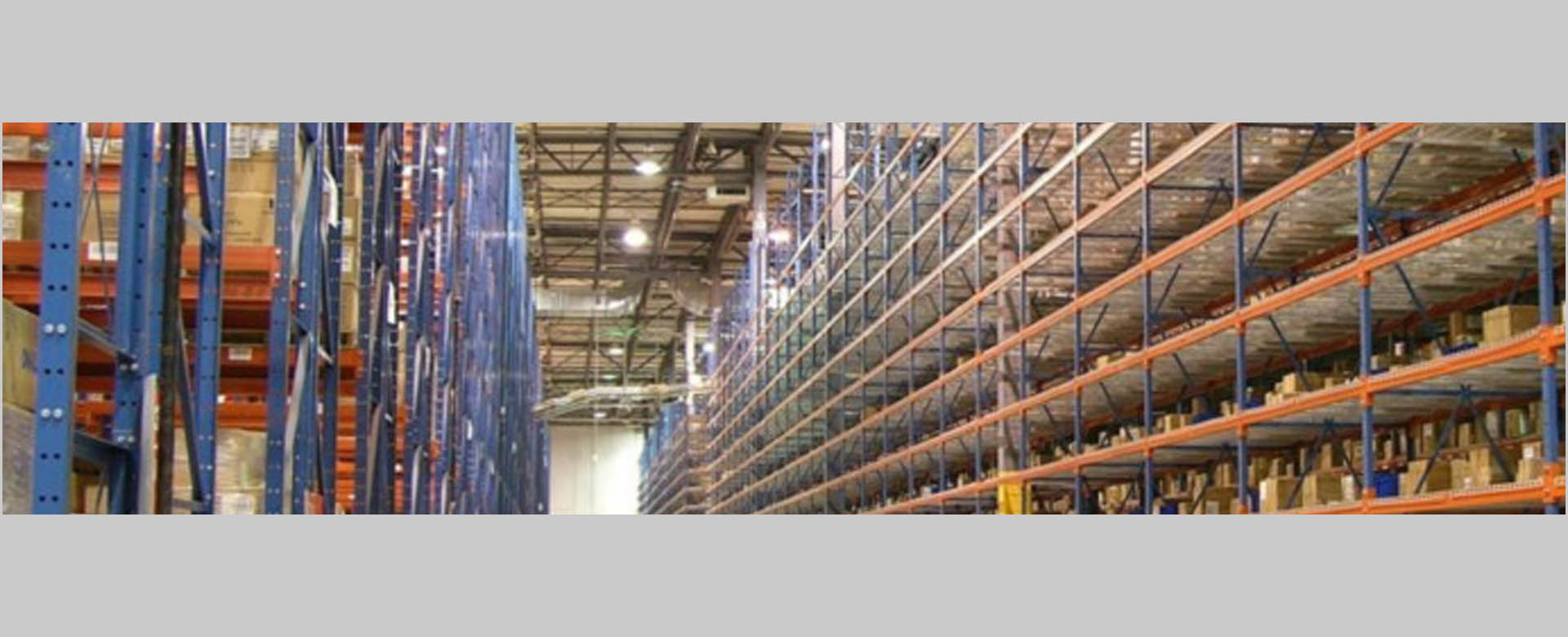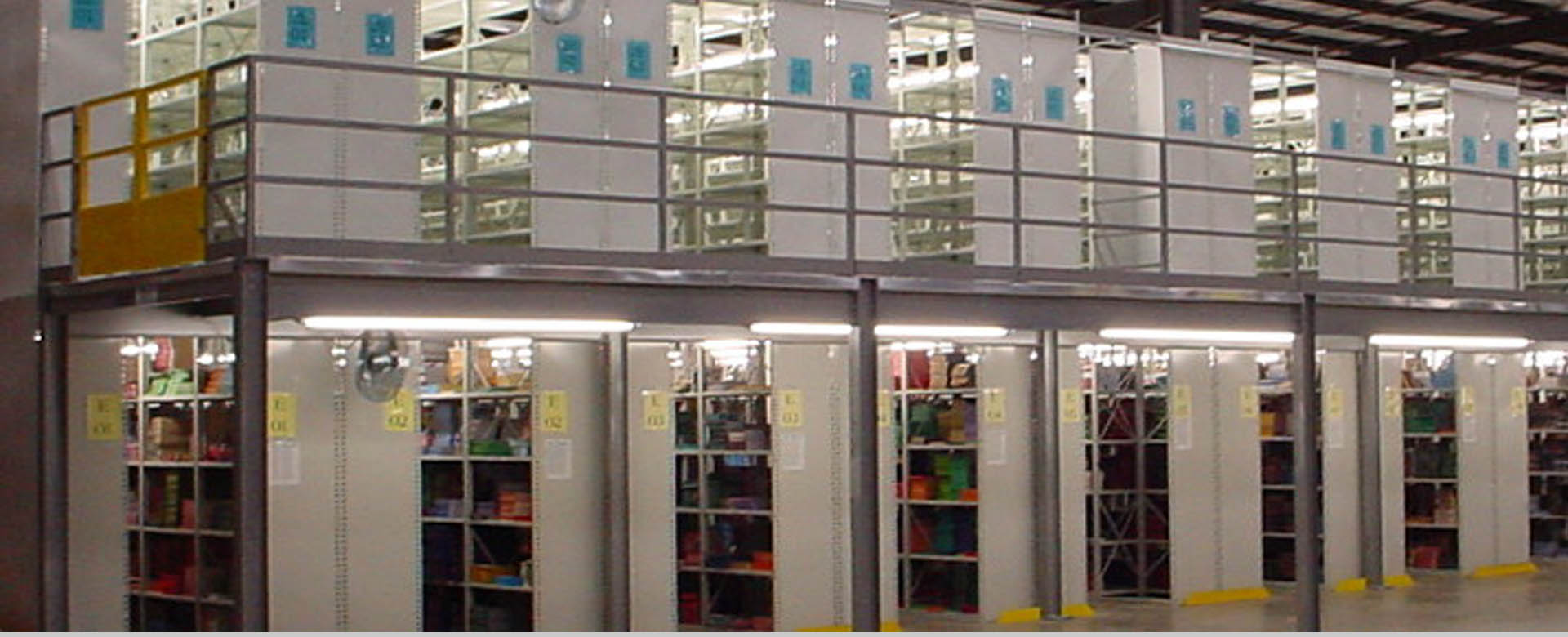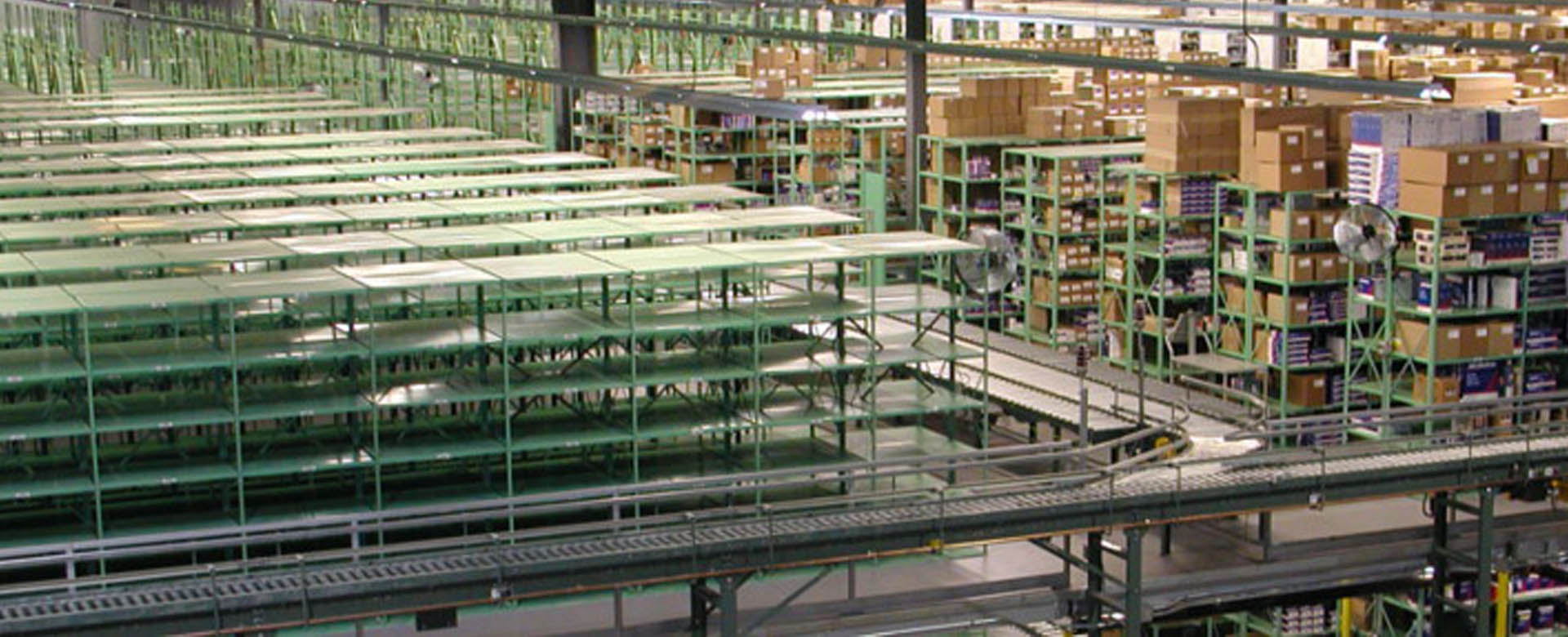Unraveling the Interrelationship between ERP, WMS, WCS, and WES: Optimizing Ecommerce Distribution Centers
Optimizing Ecommerce Distribution Centers: The Difference Between ERP, WMS, WCS, and WES
In the dynamic landscape of retail distribution, the efficient management of distribution operations is crucial to meet the ever-increasing demands of online shoppers. To accomplish this, businesses rely on a carefully orchestrated ecosystem of software solutions that seamlessly integrate and optimize various facets of warehouse operations. Four key components of this ecosystem are Enterprise Resource Planning (ERP) software, Warehouse Management Software (WMS), Warehouse Control Software (WCS), and Warehouse Execution Software (WES).
In conversation, the lines between these software systems are often blurred. In fact, many distribution operations professionals will incorrectly use these terms interchangeably. This blog post aims to explore the interrelationship between these software systems, shedding light on their roles and functionalities within ecommerce distribution centers. By understanding the differences and interdependencies of the ERP, WMS, WCS, and WES packages and how they collaborate, businesses can unlock the full potential of their operations, enhancing efficiency, accuracy, and customer satisfaction.
First, let's discuss the high-level distinctions between ERP, WMS, WCS, and WES:
1. Enterprise Resource Planning (ERP) Software: ERP software is a comprehensive, integrated system that manages and automates core business processes across various departments within an organization. It encompasses functions beyond just the warehouse, such as finance, procurement, and human resources. ERP systems provide a centralized platform for data sharing, process automation, and decision-making across the entire organization. While ERP software may include modules for warehouse management, its primary focus extends beyond the warehouse operations and covers the broader enterprise functions.
2. Warehouse Management Software (WMS): WMS is specifically designed for managing and optimizing warehouse operations. It handles tasks such as inventory management, order management, and reporting within the distribution center. WMS helps ensure efficient utilization of space, accurate inventory tracking across warehouse storage locations, and streamlined order fulfillment. While WMS will interface directly with ERP, it primarily focuses on the operational and managerial aspects of the warehouse.
3. Warehouse Control Software (WCS): WCS is a specialized software system that focuses on controlling and optimizing the material handling equipment and automated systems within a warehouse or distribution center. It manages and coordinates the physical devices, such as PLCs, conveyors, sorters, robots, and AGVs, to ensure efficient material flow and operation. WCS interfaces with higher-level systems like WES to receive instructions and provide real-time updates on equipment status and availability. WCS primarily focuses on the control and optimization of equipment and physical processes.
4. Warehouse Execution Software (WES): WES focuses on the real-time execution and optimization of warehouse operations. It bridges the gap between the WMS and the physical equipment and processes within the distribution center. WES often segments and prioritizes the tasks needed to put away inventory and fulfill orders. It works with WMS and WCS to coordinate and optimize the flow of materials, tasks, and information to ensure the most efficient means of completing the work of in the distribution center.
Now, let’s go into greater detail on each one.
Enterprise Resource Planning (ERP) Software:
The primary purpose of Enterprise Resource Planning (ERP) software is to provide a centralized platform that enables efficient coordination, communication, and data sharing across different functions such as finance, procurement, human resources, inventory, and more.
In the context of an ecommerce distribution center, ERP software plays a crucial role in integrating and synchronizing information and processes between the distribution center and the broader enterprise. Here's how ERP is used in an ecommerce distribution center:
1. Supply Chain Management: ERP systems in ecommerce distribution centers help manage the supply chain by coordinating with suppliers, handling procurement processes, tracking deliveries, and optimizing supplier relationships. This ensures a streamlined flow of goods and materials into the distribution center, supporting efficient operations.
2. Inventory Management: ERP software facilitates accurate inventory management by providing real-time visibility into stock levels by site and triggering external replenishment and/or manufacturing activities. It enables businesses to optimize inventory levels, avoid stockouts or overstocking, and align warehouse operations with demand.
3. Order Processing and Fulfillment: ERP systems streamline the order processing and fulfillment cycle by integrating with ecommerce platforms or order management systems. When a customer places an order, the ERP software captures the order details, updates inventory status information, and initiates the fulfillment process in collaboration with other systems like Warehouse Management Software (WMS) and Warehouse Execution Software (WES).
4. Financial Integration: ERP software ensures seamless financial integration by capturing and consolidating financial data related to inventory, orders, and distribution center operations. It provides accurate financial reporting, tracks costs, manages billing and invoicing, and supports financial analysis.
Warehouse Management Software (WMS):
The primary purpose of Warehouse Management Software (WMS) is to ensure efficient utilization of space, accurate inventory management, streamlined order fulfillment, and effective labor utilization. WMS serves as the nerve center of the warehouse, facilitating the flow of goods and information throughout the facility.
In an ecommerce distribution center, WMS plays a crucial role in managing the entire lifecycle of products, from receiving to storage, picking, packing, and shipping. Here's how WMS is used in an ecommerce distribution center:
1. Inventory Management: WMS provides real-time visibility into inventory levels, stock locations, and inventory movements within the warehouse. It tracks stock quantities, manages SKU information, and triggers internal replenishment processes. WMS optimizes inventory storage, ensures accurate stock counts, and minimizes stockouts or overstocking.
2. Order Management: WMS streamlines order processing and fulfillment by capturing order information from various sources such as ecommerce platforms or order management systems. It manages order priorities, assigns tasks to pickers, tracks order progress, and ensures accurate order picking and packing. WMS integrates with other systems like Warehouse Execution Software (WES) and Enterprise Resource Planning (ERP) software to synchronize order information and facilitate seamless order processing.
3. Labor Management: WMS helps optimize labor utilization within the warehouse by managing labor assignments, tracking worker productivity, and enforcing task priorities. It provides insights into labor performance, streamlines picking routes, and facilitates efficient labor scheduling to meet order demand.
4. Warehouse Reporting and Analytics: WMS generates reports and provides analytical insights on key performance indicators (KPIs) such as inventory accuracy, order fulfillment rates, labor productivity, and space utilization. These insights enable data-driven decision-making, process improvement, and operational optimization.
Warehouse Control Software (WCS):
The primary purpose of Warehouse Control Software (WCS) is to coordinate the movement of goods and materials, ensuring efficient and smooth operations within the warehouse.
In an ecommerce distribution center, WCS plays a crucial role in managing and controlling the physical devices and equipment such as PLCs, conveyors, sorters, robots, and automated guided vehicles (AGVs). Here's how WCS is used in an ecommerce distribution center:
1. Equipment Control and Optimization: WCS manages and controls the operation of material handling equipment to ensure efficient and smooth material flow. It sends commands to the equipment, such as start, stop, speed adjustments, and route changes, based on real-time data and instructions from higher-level systems like Warehouse Management Software (WMS).
2. Task Coordination: WCS coordinates the movement of goods and materials within the warehouse, ensuring that tasks are executed in the right sequence and optimizing the use of equipment. It manages the routing of products, minimizes travel distances, and reduces congestion or bottlenecks in the material flow.
3. Equipment Health Monitoring: WCS monitors the health and performance of the equipment, collecting real-time data on equipment status, condition, and availability. It provides alerts and notifications for maintenance needs, preventive maintenance schedules, and equipment diagnostics to minimize downtime and optimize equipment efficiency.
4. Integration with WMS and ERP: WCS interfaces with Warehouse Management Software (WMS) and Enterprise Resource Planning (ERP) systems to receive instructions and provide real-time updates on equipment status and availability. It collaborates with WMS to execute tasks based on order priorities, inventory availability, and other operational requirements. The integration with ERP systems ensures synchronization of data and processes related to inventory, order fulfillment, and financial management.
Warehouse Execution Software (WES):
The primary purpose of WES is to coordinate and optimize the flow of materials, orders, and information throughout the warehouse, with a focus on improving efficiency, accuracy, and productivity. Here's how WES is used in an ecommerce distribution center:
1. Order Management and Task Allocation: WES receives order information from the WMS and breaks down the orders into individual tasks. It then allocates and assigns these tasks to the appropriate resources within the warehouse, including automated material handling systems and human operators.
2. Resource Management: WES optimizes the allocation and utilization of resources within the warehouse. It considers factors such as task priorities, worker availability, equipment capacity, and order deadlines to ensure that resources are efficiently deployed.
3. Real-time Monitoring and Control: WES provides real-time visibility into the status and progress of tasks within the warehouse. It monitors key performance indicators (KPIs), such as order fulfillment rates, inventory accuracy, and labor productivity. WES also controls the execution of tasks, ensuring that they are completed efficiently and in the right sequence.
4. Optimization of Material Flow: WES optimizes the routing of materials and products through the warehouse, minimizing travel distances and reducing congestion. It considers factors such as product characteristics, storage capacities, and equipment availability to optimize material flow and maximize operational efficiency.
Conclusion
In conclusion, the various software systems discussed— Enterprise Resource Planning (ERP) software, Warehouse Management Software (WMS), Warehouse Control Software (WCS), and Warehouse Execution Software (WES) play distinct yet interconnected roles in optimizing ecommerce distribution center operations.
1. ERP software encompasses a broader scope, extending beyond the warehouse operations to manage core business processes across the entire organization. It integrates various functions such as finance, procurement, human resources, and inventory management. ERP systems provide a centralized platform for data sharing, process automation, and decision-making throughout the enterprise.
2. WMS serves as the backbone of warehouse operations, focusing on inventory management, order processing, labor optimization, and reporting. It ensures efficient space utilization, accurate inventory tracking, and streamlined order fulfillment. WMS integrates with other systems to synchronize data and processes, facilitating seamless operations within the distribution center.
3. WCS, on the other hand, focuses on controlling and optimizing the material handling equipment and automated systems within the warehouse. It ensures the efficient movement of goods, manages equipment routing, and monitors equipment health. WCS interfaces with higher-level systems, such as WES, to receive instructions and provide real-time updates on equipment status and availability. WCS's role is critical in facilitating smooth material flow and maximizing operational efficiency.
4. Lastly, WES acts as the bridge between the WMS and the physical equipment and processes within the distribution center. It optimizes and automates warehouse operations in real-time, coordinating the flow of materials, tasks, and information. WES ensures efficient order fulfillment, monitors key performance indicators, and provides real-time visibility into operations. It plays a pivotal role in orchestrating the execution of tasks, optimizing material flow, and enhancing productivity.
While all these software systems are vital for ecommerce distribution centers, their relative importance may vary based on specific business requirements. WMS is crucial for efficient warehouse operations, ensuring accurate inventory management and streamlined order fulfillment. WCS focuses on controlling and optimizing equipment, enhancing material flow within the warehouse. WES optimizes the execution of tasks, orchestrating the flow of materials and information in real-time. ERP serves as the overarching system, integrating processes across the enterprise.
To maximize the potential of an ecommerce distribution center, businesses should carefully evaluate their needs and leverage the right combination of software systems. Integration and collaboration between these systems enable seamless operations, accurate data flow, and efficient decision-making, ultimately driving customer satisfaction and operational excellence.
Discover the power of seamless warehouse management with Siggins! Maximize efficiency and streamline your operations. Take control of your supply chain like never before. Unleash the potential of your warehouse with Siggins today!





